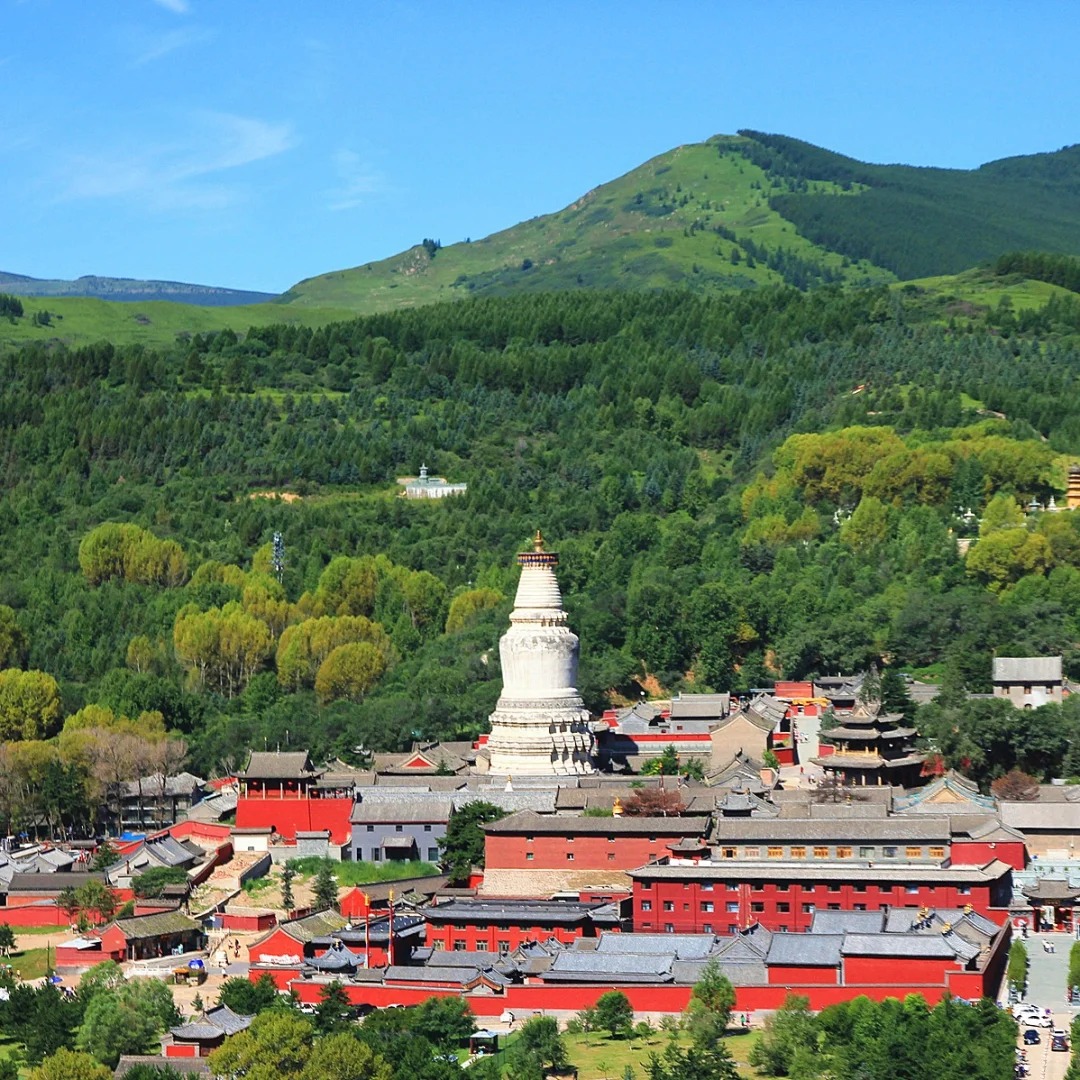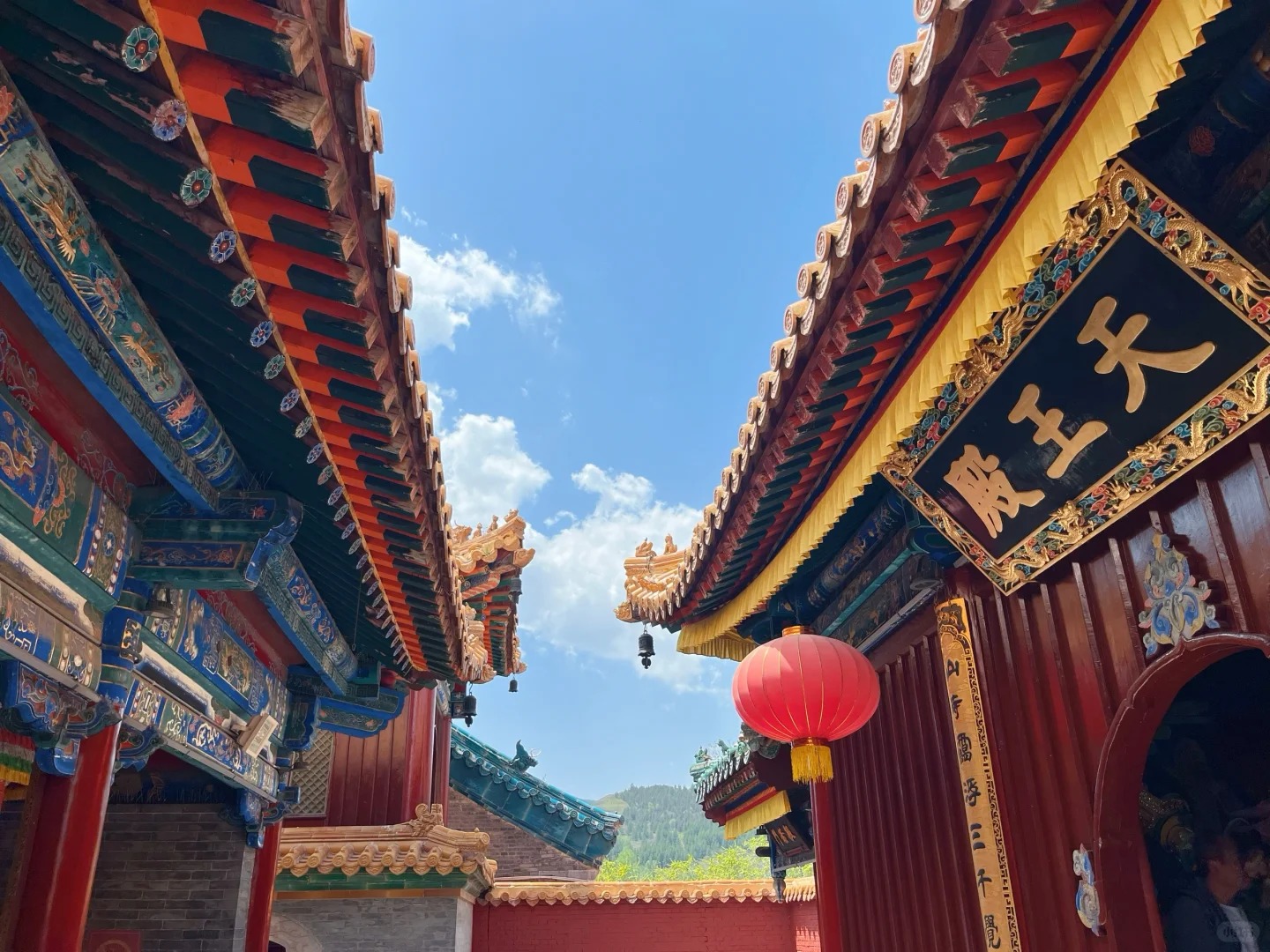Visiting Information
| Information | Details |
|---|---|
| Chinese Name | 五台山 (Wǔtái Shān) |
| Location and Address | Wutai County, Xinzhou City, Shanxi Province, China |
| Opening Time/Hours | Open 24 hours (individual temples may have specific opening hours) |
| Entrance Fee | CNY 140 (March to November); CNY 135 (December to February); Additional fees may apply for specific temples or attractions |
| How to Get There | By Bus: Take a bus from Taiyuan or Xinzhou to Taihuai Town (the center of Mount Wutai scenic area) By Taxi: Available from Xinzhou or Taiyuan, but can be expensive (Note: No metro system available) |
| Best Time for Visit | June to September for mild weather and lush scenery; avoid Chinese national holidays for fewer crowds |
| Contact Info | +86 350 6542114 (Mount Wutai Tourism Bureau) |
Overview
Mount Wutai, also known as Wutai Shan, is one of the Four Sacred Mountains of Chinese Buddhism. Located in Shanxi Province, it is renowned for its rich Buddhist heritage, stunning natural beauty, and architectural wonders. The mountain is named after its five flat peaks and has been a center of Buddhist pilgrimage for over 1,500 years.
Historical Background
Mount Wutai’s history as a Buddhist site dates back to the 1st century CE. It gained prominence during the Tang Dynasty (618-907) when it became associated with Manjusri, the Bodhisattva of wisdom. Over the centuries, emperors from various dynasties patronized the site, leading to the construction of numerous temples and monasteries. The mountain’s importance extended beyond China, attracting pilgrims from Tibet, Mongolia, and other parts of Asia. In 2009, Mount Wutai was inscribed as a UNESCO World Heritage Site, recognizing its outstanding universal value in terms of cultural and natural heritage.

Architectural Features
- Temples and Monasteries: Mount Wutai is home to 53 sacred Buddhist monasteries, each with its unique architectural style and historical significance. The most famous include Xiantong Temple, Tayuan Temple, and Pusading Temple. These structures showcase a blend of Han Chinese and Tibetan architectural elements, reflecting the mountain’s role as a melting pot of Buddhist cultures.
- Pagodas: The mountain features several notable pagodas, such as the White Pagoda at Tayuan Temple. These multi-tiered structures are not only architectural marvels but also serve as important religious symbols and landmarks within the sacred landscape.
- Bronze Halls: Mount Wutai is famous for its bronze halls, particularly the one at Pusading Temple. These unique structures, cast entirely in bronze, demonstrate the advanced metallurgical skills of ancient Chinese artisans and the wealth that was devoted to Buddhist construction on the mountain.
- Carved Stone Sculptures: Throughout the mountain, visitors can find intricate stone carvings and sculptures depicting Buddhist deities, scenes from Buddhist scriptures, and symbolic motifs. These artworks not only serve a decorative purpose but also play an important role in Buddhist teachings and meditation practices.
Cultural Importance
Mount Wutai holds immense cultural significance in the Buddhist world, particularly as the earthly abode of Manjusri Bodhisattva. It has been a vital center for the development and spread of Buddhism in China, serving as a meeting point for different schools of Buddhist thought. The mountain’s monasteries have been centers of learning, where important translations of Buddhist texts were carried out and where cultural exchanges between different regions of Asia took place. Mount Wutai’s religious importance extends beyond Buddhism, as it also incorporates elements of traditional Chinese religion and culture, making it a symbol of Chinese spiritual and cultural heritage.
Surrounding Attractions
- Nanshan Temple: Located on the southern slope of Mount Wutai, Nanshan Temple is known for its grand architecture and beautiful surroundings. It houses important Buddhist relics and offers stunning views of the mountain landscape. The temple is particularly famous for its Maitreya Buddha statue and its role in Buddhist education.
- Shuxiang Temple: This temple is renowned for its wooden statue of Manjusri riding a lion, which is considered one of the most exquisite Buddhist sculptures in China. The temple’s architecture is a fine example of Ming Dynasty (1368-1644) style, and its location offers panoramic views of the surrounding mountains.
- Luohou Temple: Situated on the eastern peak of Mount Wutai, Luohou Temple is one of the oldest temples on the mountain. It is known for its Ming Dynasty architecture and its collection of Buddhist scriptures. The temple’s elevated position provides breathtaking views of the sunrise, making it a popular spot for photographers and pilgrims alike.
- Wutai County Museum: Located in Taihuai Town, the central area of Mount Wutai, this museum houses a collection of Buddhist artifacts, historical relics, and artworks related to the mountain’s history. It offers visitors insights into the cultural and historical significance of Mount Wutai beyond what can be seen in the temples themselves.

Photography Opportunities
- Temple Architecture: The diverse and ornate architecture of Mount Wutai’s temples provides endless opportunities for both wide-angle and detail shots. From the grand facades to intricate roof decorations, photographers can capture the essence of traditional Chinese Buddhist architecture.
- Mountain Landscapes: The five flat peaks of Mount Wutai, each with its unique character, offer stunning landscape photography opportunities. Sunrise and sunset shots from vantage points like the East Peak or Dailuo Peak can result in breathtaking images of the mountains shrouded in mist or bathed in golden light.
- Buddhist Rituals and Pilgrims: The active religious life on Mount Wutai presents opportunities for capturing candid moments of devotion. From monks performing rituals to pilgrims prostrating themselves along the paths, these scenes offer a glimpse into the living spiritual traditions of the mountain.
- Seasonal Changes: Each season brings a different character to Mount Wutai. Spring offers blooming flowers against ancient architecture, summer showcases lush greenery, autumn brings vibrant foliage, and winter transforms the landscape into a serene snow-covered wonderland. Photographers can capture the mountain’s changing moods throughout the year.
Modern Importance
- Buddhist Pilgrimage Site: Mount Wutai continues to be one of the most important pilgrimage destinations for Buddhists from around the world. It attracts millions of visitors annually, contributing significantly to the local economy and helping to maintain the vitality of Buddhist traditions in China.
- Cultural Heritage Preservation: As a UNESCO World Heritage Site, Mount Wutai plays a crucial role in the preservation of Chinese Buddhist culture and architecture. Ongoing conservation efforts ensure that its ancient temples and natural landscapes are protected for future generations, serving as a living museum of Chinese Buddhist history.
- Environmental Conservation: The protected status of Mount Wutai has contributed to the preservation of its natural ecosystems. The mountain area serves as an important ecological zone, helping to maintain biodiversity and providing a model for balancing religious tourism with environmental conservation.
- Interfaith and International Relations: Mount Wutai continues to be a place of cultural exchange, hosting international Buddhist conferences and fostering dialogue between different Buddhist traditions. Its significance extends to diplomatic relations, particularly with countries where Buddhism is prevalent, enhancing China’s cultural soft power on the global stage.

FAQ
- What is Mount Wutai famous for?
Mount Wutai is famous for being one of the Four Sacred Mountains of Chinese Buddhism, its association with Manjusri Bodhisattva, its numerous ancient temples and monasteries, and its stunning natural beauty. It’s renowned for its rich Buddhist heritage, architectural wonders, and as a major pilgrimage site. - What’s inside Mount Wutai?
Inside Mount Wutai, you’ll find 53 sacred Buddhist monasteries, including famous ones like Xiantong Temple and Tayuan Temple. There are also numerous pagodas, bronze halls, carved stone sculptures, and natural scenic spots across its five peaks. The area is filled with Buddhist art, relics, and ongoing religious activities. - Is Mount Wutai free?
No, Mount Wutai is not free. There’s an entrance fee of CNY 140 from March to November and CNY 135 from December to February. Additional fees may apply for specific temples or attractions within the area. - Is Mount Wutai worth visiting?
Yes, Mount Wutai is definitely worth visiting. It offers a unique blend of natural beauty, rich Buddhist culture, and historical architecture. Whether you’re interested in religion, history, architecture, or nature, Mount Wutai provides a profound and memorable experience. - What to do in Mount Wutai?
In Mount Wutai, you can visit ancient temples and monasteries, observe Buddhist rituals, hike the mountain paths, enjoy panoramic views from the peaks, photograph stunning landscapes and architecture, learn about Buddhist history and culture, and experience the peaceful atmosphere of this sacred site. - How do I get to Mount Wutai in the local city?
To get to Mount Wutai from the nearest major city, Taiyuan (capital of Shanxi Province):
1. By Bus: Take a direct bus from Taiyuan West Bus Station to Taihuai Town (the center of Mount Wutai scenic area). The journey takes about 4-5 hours.
2. By Car or Taxi: It’s about a 4-hour drive from Taiyuan to Mount Wutai.
3. You can also first travel to Xinzhou city, which is closer to Mount Wutai, and then take a bus or taxi from there. - How to visit Mount Wutai?
To visit Mount Wutai:
1. Plan to spend at least 2-3 days to fully explore the area.
2. Start at Taihuai Town, the central area with many key temples.
3. Purchase the entrance ticket and any additional tickets for specific attractions.
4. Consider hiring a local guide for insights into the site’s history and significance.
5. Wear comfortable walking shoes as there’s a lot of walking and climbing involved.
6. Be respectful of religious practices and dress modestly when visiting temples.
7. Try to visit during the warmer months (June to September) for the best weather.
8. Be prepared for the high altitude (over 3,000 meters at the highest peak) and take it slow if you’re not accustomed to it.



